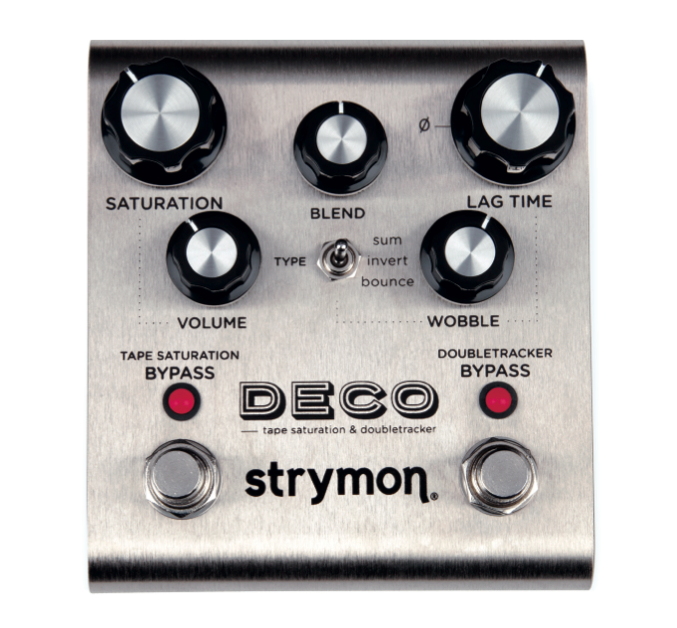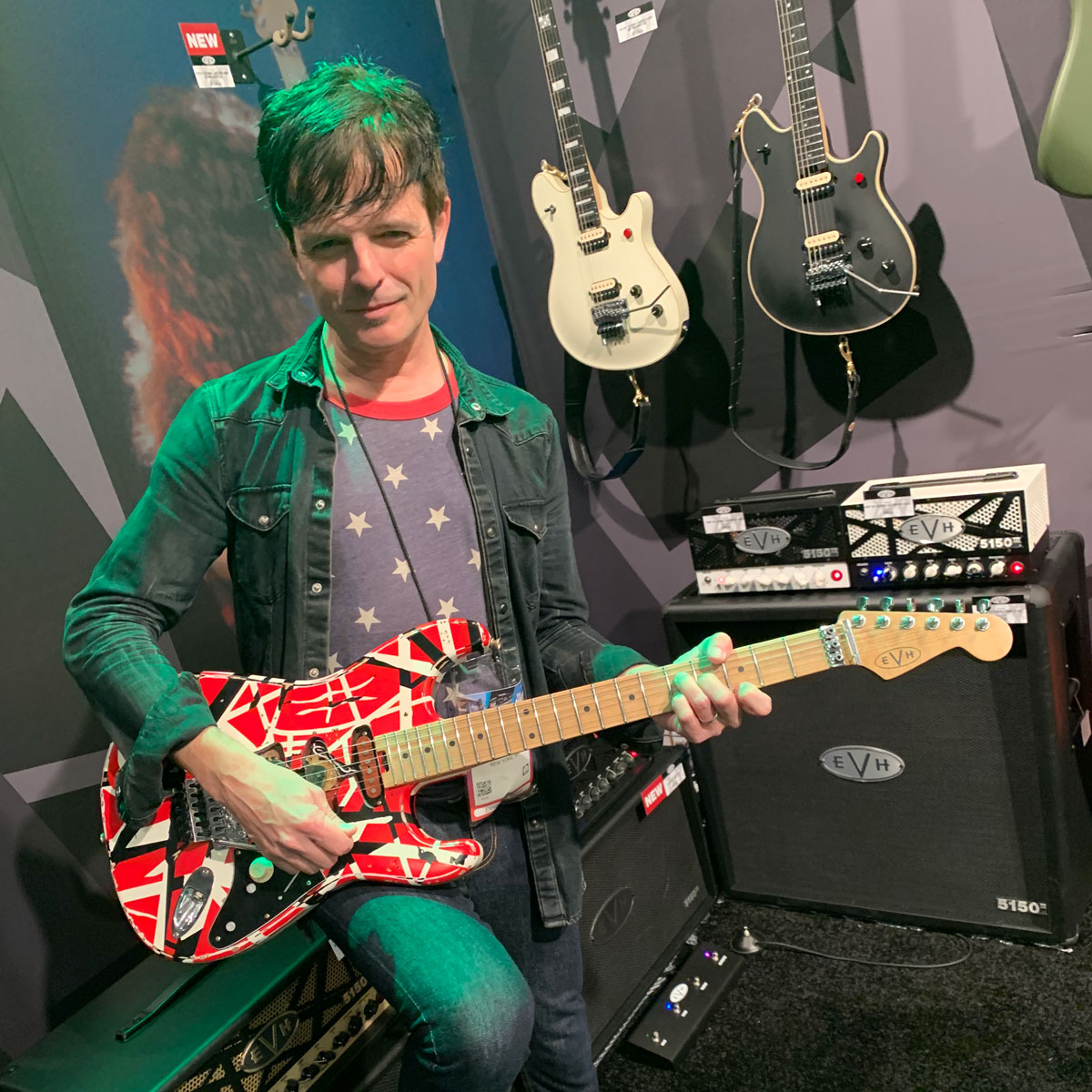Review: Strymon Deco Tape Saturation and Doubletracker Pedal — Video

PLATINUM AWARD WINNER
Chances are, many younger guitarists have never recorded with a vintage studio reel-to-reel tape deck, much less witnessed one that wasn’t covered in dust.
And it’s a shame, because they’ve missed out on the warm compression analog that tape decks produce as well as the soft distortion that occurs when a guitar signal is overloaded into it. In addition, other natural-sounding tape-based effects, like flanging, chorusing and slapback echo have been replaced with strident digital imitations.
All things considered, a reel-to-reel deck is an impractical option for most guitarists. Fortunately, the Strymon Deco Tape Saturation and Doubletracker vividly emulates all of those superb analog sounds in a pedalboard-friendly, digital stompbox that brilliantly enhances your guitar tone with fullness and colorful effects.
FEATURES The pedal comes in a nickel-plated aluminum chassis with bulletproof construction. At the heart of the Deco is a high-performance Sharc DSP that provides incredibly powerful 32-bit floating-point processing, which convincingly captures the authentic tape compression and tape drive of a vintage reel-to-reel deck along with organic-sounding echoes, chorusing, doubling and through-zero flanging effects that can be created with two tape decks.
It’s best to think of the Deco as two-pedals-in-one (or two virtual tape decks) with two footswitches that engage the Tape Saturation and Doubletracker functions independently. Tape Saturation handles the tone shaping with knobs for volume and saturation (tape drive). Doubletracker has controls for blend (mix level of the two decks), wobble (random speed-modulation) and lag time (adjustment for either tape flange, tape chorus, slapback delay, or tape echo up to 500mS). A three-way switch (sum, invert and bounce) adjusts the internal phase and routing of the doubletracked sound. Holding down the footswitches engages secondary functions of the five knobs for control over high trim, low trim, auto-flange time, doubletracker boost/cut and wide stereo mode.
The Deco’s rear panel provides a mono input (an internal jumper enables selectable TRS stereo input), an expression pedal input (that can also be used as an external tap tempo or favorite switch to recall a preset), and stereo (left and right) outputs. The pedal is true bypass but can be set for analog buffered bypass and comes with a nine-volt DC power supply.
All the latest guitar news, interviews, lessons, reviews, deals and more, direct to your inbox!
PERFORMANCE Strymon’s success in making the Deco sound truly analog is nothing short of extraordinary. Sticking to the Tape Saturation side, the Deco instantaneously transformed my guitar sound with incredible body and warmth. Setting the saturation knob relatively low, the tape compression is thick with chunky roundness. It adds lingering sustain to single notes and makes chords sound bigger, with a plush low end that doesn’t overwhelm. Pushing it further past noon, the sound starts to clip into overdrive, giving it a gentle roar that’s less crunchy but distinctively smooth and transparent. It’s the kind of preamp gain sound that sounds so natural you’ll never want to turn it off.
Turning on the Doubletracker side of the pedal introduces spacious effects that you would typically need several pedals to recreate. The rotation of the lag time knob determines the type of effect. Counterclockwise from noon offers a wide range of tape flanging that chews up and sweeps the signal to achieve that “jet plane” reel-flange, which can be as subtle as Heart’s “Barracuda,” or as extreme as Hendrix’s “Bold As Love.” At any time, you can press down and hold the Doubletracker footswitch to unleash a studio quality through-zero flange that absolutely nails the effect on Queen’s “Keep Yourself Alive.” Set at noon, it introduces chorus that sounds rich and syrupy. At about two o’clock and further, you can get classic slapback delay for rockabilly and gorgeous tape echo that sounds phenomenal for soloing, especially when you add a touch of modulation with the wobble knob.
CHEAT SHEET
STREET PRICE $299
MANUFACTURER Strymon, strymon.net
The lag time knob creates a full range of double-tracking tape effects like flange, chorus, slapback and echo.
Saturation allows for subtle compression or fat tape-driven overdrive at higher settings.
The Bottom Line The Deco amazingly recreates the analog warmth and detailed tones of a vintage studio reel-to-reel deck for tape-based drive and effects in a stompbox.
Paul Riario has been the tech/gear editor and online video presence for Guitar World for over 25 years. Paul is one of the few gear editors who has actually played and owned nearly all the original gear that most guitarists wax poetically about, and has survived this long by knowing every useless musical tidbit of classic rock, new wave, hair metal, grunge, and alternative genres. When Paul is not riding his road bike at any given moment, he remains a working musician, playing in two bands called SuperTrans Am and Radio Nashville.

